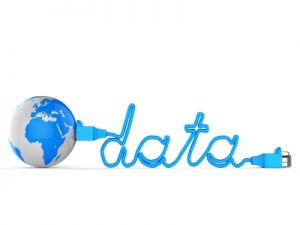
Data Modeling in Cloud Computing
 Data modeling is one of the most powered discipline in the world of Data Management. From the conceptual to the physical, models facilitate data analysis within any enterprise, enhancing processes including database design or application integration. So let’s take a look at some of the benefits data modeling brings to cloud computing and read more about some interesting vendors I would personally recommend.
Data modeling is one of the most powered discipline in the world of Data Management. From the conceptual to the physical, models facilitate data analysis within any enterprise, enhancing processes including database design or application integration. So let’s take a look at some of the benefits data modeling brings to cloud computing and read more about some interesting vendors I would personally recommend.
Data modeling gives structure for moving to the cloud
As cloud computing gains steam in the context of data warehousing and BI, so should the importance of data modeling which is often overlooked as a component of cloud computing. However, modeling data can provide structure and help companies decide what data should reside in the cloud.
Steve Hoberman, author of the books, Data Modeling Made Simple, Data Modeler’s Workbench, and Data Modeling for the Business, stated his thoughts on “Better BI Through Data Modeling” in an interview for TDWI. Data modeling is evolving with each of these three areas: the backend servers (or infrastructure), a middle tier platform (including the development environment), and the applications (or software). Steve says it is extremely important to get the infrastructure protected and right because any issues occurring here spreads to anything above it – the platform and the software.
With data modeling, analysis has to be done first, in order to understand all data in the enterprise and be able to decide what data should be sent to the cloud. Let’s say an organization decides to send all of their prospects somewhere in the cloud to store and retrieve, and they’re using some kind of CRM lead-generation software that’s cloud-based. Well, how do all their contacts, phone numbers, and so on integrate with all their existing customers, and who’s responsible for making sure it all fits together? This is where data modeling comes in, determining what data makes sense to send out onto the cloud.
Now, after we understood the requirements of the application we need to build, let’s check out some interesting cloud vendors that could be very useful to your enterprise overview of data:
- Teradata – A global leader in analytic data platforms, marketing and analytic applications, and consulting services. Teradata helps organizations collect, integrate, and analyze all of their data so they can know more about their customers and business and do more of what’s really important. With 10,000+ professionals in 77 countries, Teradata serves more than 2,500 customers, including the top companies across all major industries: consumer goods, financial services, healthcare, automotive, communications, travel, hospitality, and more. An ethical and future-focused company, Teradata is recognized by the business media and industry analysts for technological excellence, sustainability, and business value.
- Tableau – Tableau Software helps people see and understand data by delivering fast analytics, visualization and rapid-fire business intelligence. Tableau is recognized by a 2015
- Qlik – A product that I have been looking into, Qlik lets you create visualizations and dashboards that answers your company’s questions and helps build a story around your data.
- LogiAnalytics – A product that I have personal experience with, Logi has a recommendation engine that enables non-data scientists to easily analyze, visualize and socialize insights from data.
- Gartner Report as the gold standard in the next-generation of data discovery capabilities, with the potential to meet the needs of the current market by delivering their own business-user-driven data discovery capabilities and engaging adoption. Used by more than 26,000 organizations worldwide, Tableau’s award-winning software delivers fast analytics and rapid-fire business intelligence. As the result, you get answers from data quickly, with no programming required.
- Actian – Actian transforms big data into business value for any organization, driving revenue growth while mitigating risk with high-performance, low-latency in-database analytics, extensive connectivity, and data preparation. Using off-the-shelf hardware, the Actian Analytics Platform empowers users to connect, analyze, and take action on big data with actionable insights delivered in seconds or minutes. Actian makes Hadoop enterprise-grade, providing high-performance data enrichment, visual design, and SQL analytics with no need for MapReduce. Tens of thousands of organizations apply Actian analytics in financial services, telecommunications, digital media, healthcare, and retail.
One thing is for sure – modeling data in cloud computing gives BI leaders the power to track how traditionalists translate their forward-looking product investments into renewed momentum and an improved customer experience. Therefore, how are you currently benefiting the Data Modeling concept? Please share you thoughts in the comments below.
Source photo: http://www.freedigitalphotos.net/





